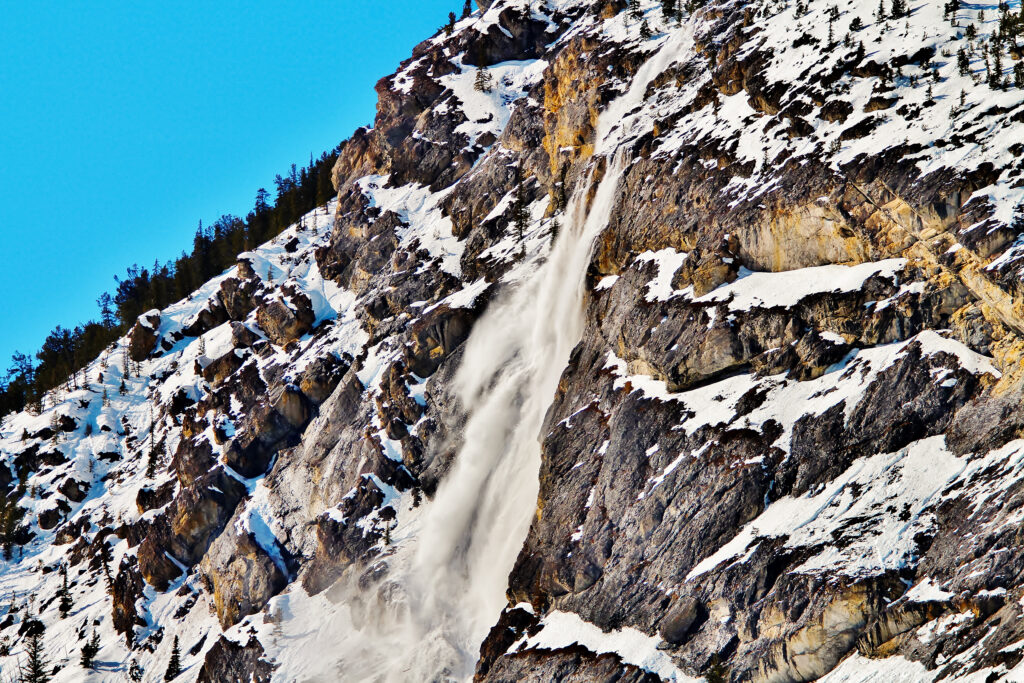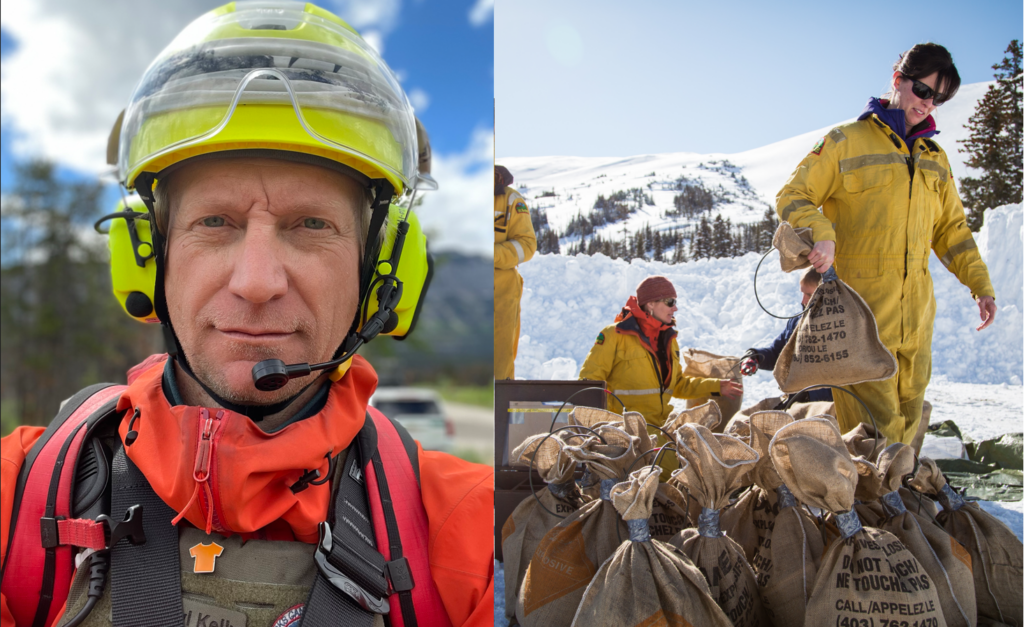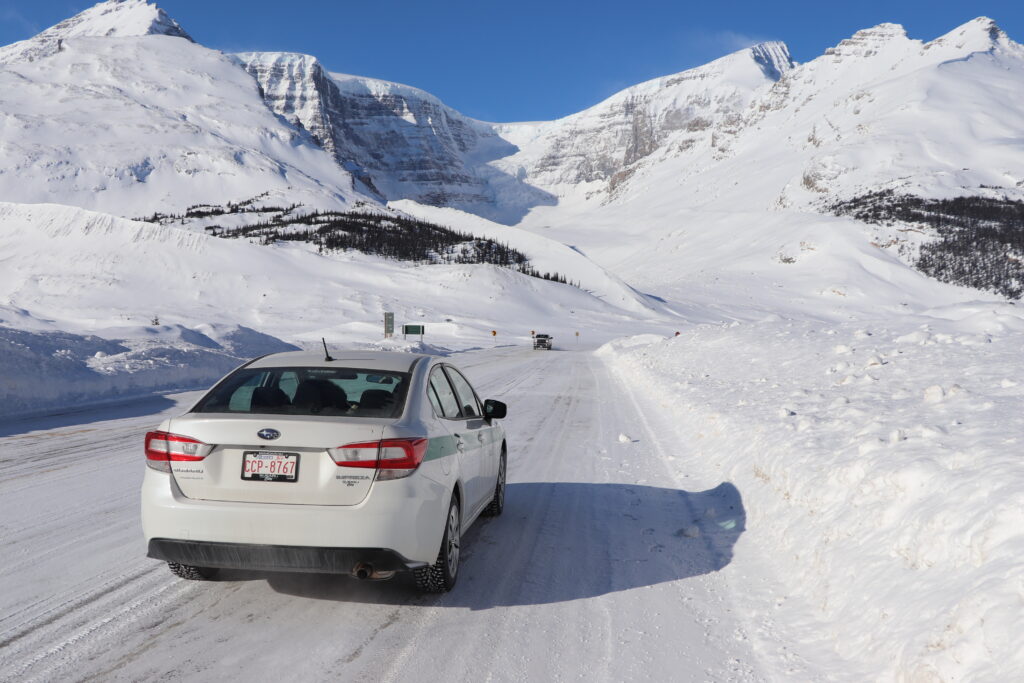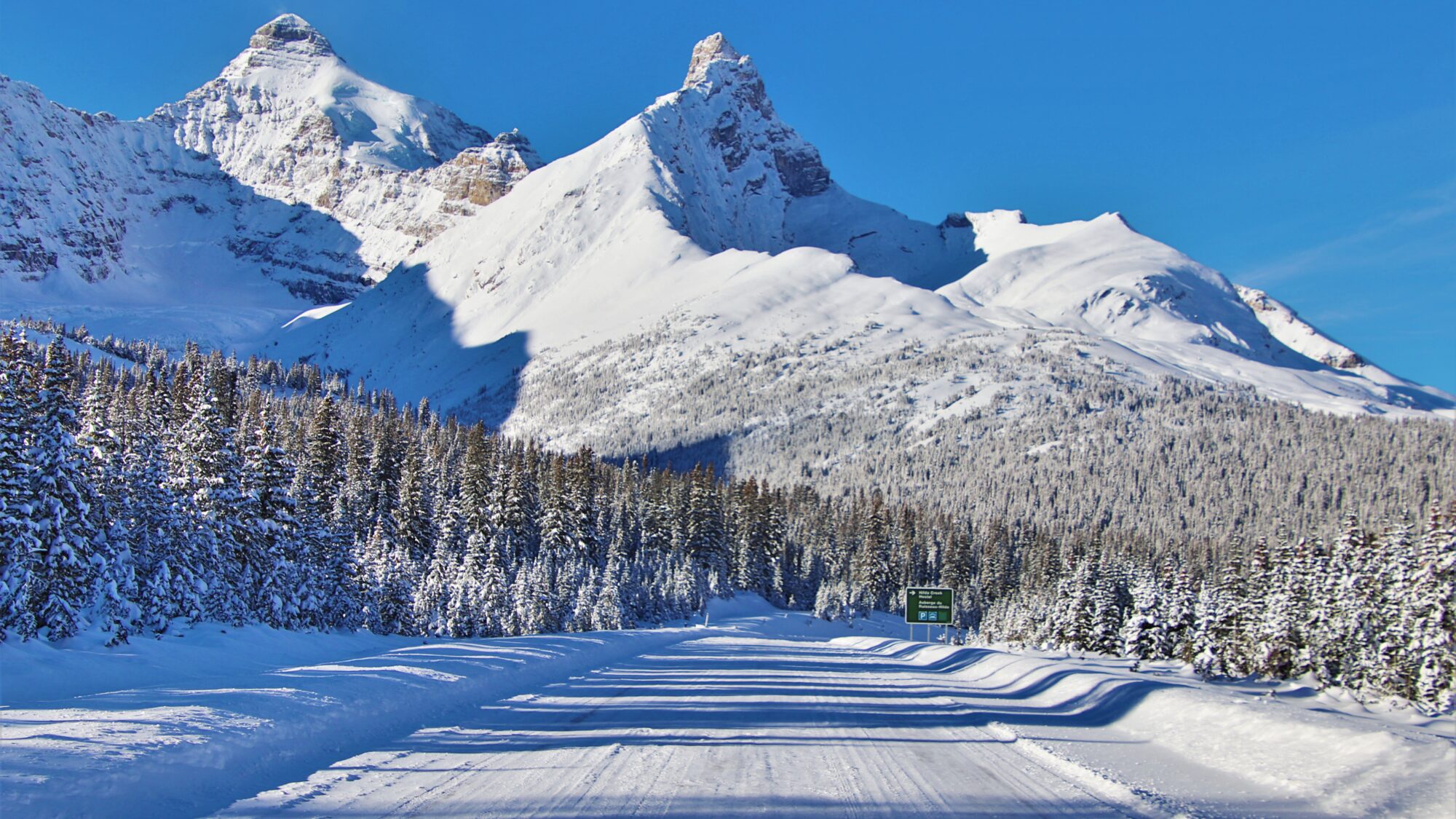The Icefields Parkway is an incredible, unique spot in Alberta’s Rocky Mountains with breathtaking views that make it well worth the drive. The drive is a must-do for road trip fans, with incomparable views of some of the world’s most beautiful mountain scenery. It’s also a drive that requires some planning and preparation to get the most out of it, especially in the winter months.
“It is awe-inspiring,” says Deryl Kelly, a visitor safety specialist with Parks Canada. “It’s the opportunity to drive through the middle of the Canadian Rockies—right through to the apex of the Continental Divide—and see the ice caps and the snow-covered mountains.”
In the summer, thousands of travellers are on the parkway each day. But in winter, despite the stunning scenery, there may be less than a dozen vehicles travelling the road in a day.
“The parkway is one of those famous highways in the world,” says Kevin Gedling, an engagement officer with Jasper National Park. “And if you drive it in the wintertime, you pretty much have the place to yourself.”

While the views have made the road a world-famous drive, the Parkway is an isolated 232-kilometre stretch between the Banff and Jasper National Parks with little services and support along the way. You need to be well prepared for the trip.
“We tend to call it an accessible backcountry experience—there are no gas stations, no cell coverage,” says Kelly. “And if we close the road for avalanche concerns, basically there’s no exit.
Parks Canada teams monitor the conditions on the parkway year-round, and in the winter season, 46 avalanche paths need to be carefully watched. When there are heavy snowfalls, avalanche control work is necessary, which means a highway shutdown is likely as well. Shutdowns are never taken lightly, and only implemented when there are serious risks to the safety of visitors.

“The decision to close the road comes up probably anywhere between eight to 15 times a year,” says Kelly. “We will typically use helicopter bombing to control our avalanche paths. So, that’s dropping 26-kilogram bombs out of the helicopter on the avalanche path—trying to initiate some sort of controlled avalanche to clear any hazard.”

While all efforts are made to publicize those closures on Alberta 511 and to close only the sections of the Parkway required, it’s possible shutdown could be called on short notice in winter.
“You have to be self-reliant,” says Kelly. “The consequences of being stuck in your vehicle in January for a long time could be life-changing if you’re unprepared.”
Tips for a safe drive
Before you head out on the Icefields Parkway—or any other Alberta highway—it’s essential to plan and ensure your vehicle is in tip-top shape before you leave.
That includes doing oil and fluid checks, visual inspections of your engine’s belts and hoses, and using winter tires and seasonal windshield wipers if possible. Before going on any long road trip, you should also check your battery—and AMA members get free mobile battery testing services, plus exclusive pricing if you need a replacement—which we’ll also do on the spot. AMA’s mobile battery testing services are available in these communities around the province, so be sure to schedule it ahead of hitting the road.
Beyond car maintenance, you should also stock your car with daily supplies like snacks, extra clothing, and an Emergency Roadside Kit. A good kit will include booster cables, warm winter clothing and blankets, a flashlight, a first-aid kit, a shovel, and reflective items for use on the side of the road.
“To be fully prepared, add some extras to your kits such as cell phone chargers, non-perishable food and gear for staying warm like blankets and activated hand-warmers,” says Brandon Klassen, supervisor of AMA’s Roadside Assistance Partner network.
Another good point to note when it comes to being prepared for highway driving and long trips is to consider upgrading to an AMA Premier Membership—which includes long-distance towing.

It’s also important to feel confident as a driver on winter highways. Consider taking an AMA Winter Driving Lesson—which covers proactive winter driving tips and winter braking, steering and accelerating best practices—ahead of any long trips.
But overall, if you’re prepared for the trip, the main thing to remember is to enjoy Alberta’s beautiful landscapes and natural wonders on the Icefields Parkway.

“As long as a person is confident in themselves and they have some driving experience in Alberta winter conditions, then they should be in good shape,” says Gedling. “It’s an outstanding experience.”
